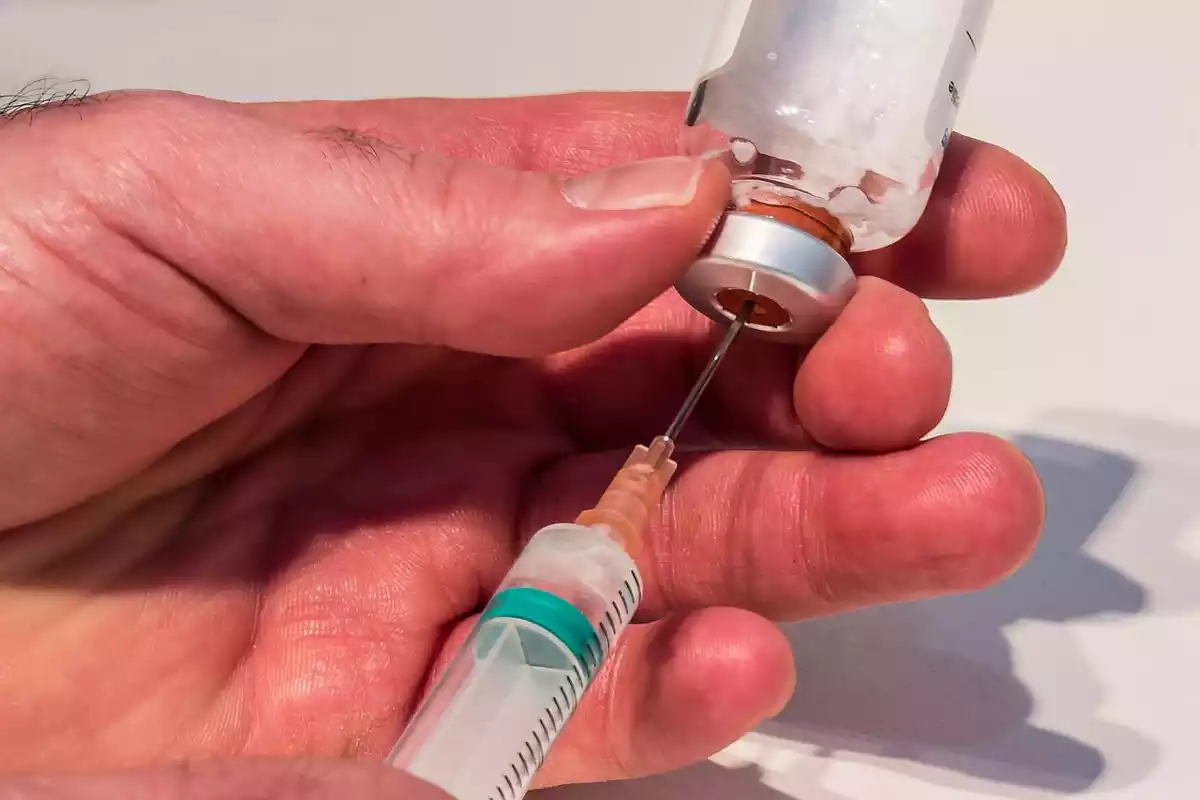Botox is one of the most popular beauty treatments in the last few years. Thanks to botulinum toxin type A, the expression wrinkles can be eliminated, because it paralyses the muscle and prevents it from contracting. Its effect is temporary and it usually lasts between four or six months, depending on the person.
There are many questions that come to mind when considering this type of treatment. For this reason, it is important to consult a professional, who can tell you everything you need to know about Botox, including its price, use and effects.
What is Botox (botulinum toxin)?
The term Botox refers to botulinum toxin type A, whose name comes from the first brand that commercialised this type of medicine. Although botulinum toxin type A causes botulism, it is used for its ability to produce muscle paralysis. So, for medical purposes, it is used to treat certain neurological diseases and, in cosmetic medicine, to eliminate expression wrinkles.
When it comes to its aesthetic application, botulinum toxin is injected into the skin so that the fibres of the muscles relax, reducing their contraction power. Nerves lose their ability to communicate with fibres, which causes paralysis. The most common areas where Botox is applied are lips, forehead, nose, chin and facial oval. One of the latest developments is the use of Botox for hair, which combined with vitamins and hyaluronic acid manage to increase hydration and so, strengthen hair health, which boosts hair growth.
For medical purposes, Botox is used to treat various diseases that require the paralysis of certain muscles in order to reduce pain. Some of its most common applications are those that treat muscle spasms and excessive sweating, among others.

Benefits and therapeutic effects
The use of Botox offers many benefits, both for medical and cosmetic purposes. Some of them are:
It avoids cosmetic surgery by reducing facial wrinkles.
It can be used at any time of the year.
Its application is practically painless. It is enough to apply cold locally and a topical anaesthetic cream.
It has almost no contraindications.
Side effects, such as allergic reactions, nausea or facial stiffness, are rarely developed.
It is quickly injected. The facial treatment is performed in just 5 minutes.
You do not need to take a sick leave nor does it require hospitalisation. It is commonly known as “the lunchtime treatment”, as many women use this break to visit the aesthetics centre for its application, since it will not be noticed afterwards.
The price of Botox is not very expensive and a botulinum toxin treatment is affordable for many people.
After-effects rarely occur. Occasionally, there may appear bruises, inflammation or redness.
It is an outpatient treatment, that is, it is done in the consulting room.
It can be used by people from 30 to 65 years old.
It is considered a safe method as long as it is applied by a plastic surgeon that has knowledge of facial anatomy.
It softens your expression and makes it lively, contrary to the social belief that Botox makes your face look rigid.
Side effects and risks
You also need to consider a series of disadvantages when it comes to the use of botulinum toxin. Among its side effects and risks, there are:
Its effect is not immediate. It takes about three days to set up and its full effect cannot be noticed until about 20 days after its application.
If it is not applied correctly, visible asymmetries may appear.
According to the brand of Botox and its manufacturer, the effects can vary greatly.
Certain activities, such as sun bathing, facial massages and certain sports, should be avoided, since they may modify the effects of the toxin.
You may fall into the trap of choosing misleading offers from certain aesthetics centres that can lead to its incorrect application and complications.
There is the risk of being carried away by the low price of Botox.
It cannot be applied to all types of wrinkles, only to those that are caused by muscle contraction.
The results are reversible, and you have to re-apply the treatment for a lasting result.
The person who injects the Botox must have great knowledge of facial anatomy, because a mistake of just few millimetres may lead to serious consequences.
Since the botulinum toxin injection has a ring of effect of 2 cm, sometimes, it can cause changes in other unwanted areas.
It may cause eyebrows to fall if it is not applied by a professional.
Medical uses of botulinum toxin
Apart from its cosmetic use, which was explained before, Botox was initially used to treat health conditions. Some of these medical applications are:
Strabismus
Dystonias and spasms, when a muscle or a group of specific muscles are affected, and the involuntary movement of these is caused. For example, spasmodic torticollis, Tourette’s syndrome, writer’s cramp or hemifacial spasm.
Migraine, although it is not effective for all types of migraine and it is still being investigated for its effectiveness.
Hyperhidrosis (people with excessive sweating in the armpits, hands and feet). Thanks to Botox, it is possible to reduce the activity of the sweat glands.
Blepharospasm, which is the sporadic and involuntary contraction of the eyelid muscle.
Urinary incontinence in paraplegic people.
Spinal pain, in which the pain appears in certain areas of the spine due to chronic contractions.
Sialorrhea, which causes excessive salivation.
Hair treatments: Botox is used to boost hair growth and strengthen it.
Myths and facts about Botox injections
The use of Botox has created a series of social beliefs that have generated uncertainty and doubts about its application and safety. For this reason, we will try to identify and unravel some of the myths about Botox.
1. It is used to eliminate wrinkles
True. This statement is correct, but it must be pointed out that, contrary to what people think, this treatment is more effective if it is used to prevent the appearance of wrinkles rather than to eliminate them once they have already appeared. It is one of the safest treatments to reduce wrinkles.
2. It is harmful to the body
False. Certainly, botulinum toxin is the cause of botulism, but at such low concentrations it poses no risk to human health.
3. It distorts and eliminates facial expressions
False. Botox only eliminates expression wrinkles. If there are alterations in facial expression it is due to an incorrect application of botulinum toxin.
4. Botox injections are addictive
False. There is no study to show that the use of Botox can cause addiction.
5. It is a painless treatment
True. As it was mentioned before, Botox is injected with a thin needle at the intramuscular level, but you will only notice a slight discomfort.
6. Botox has medical uses
True. Its application is used to treat excessive sweating, improve ophthalmic conditions, involuntary spasms and other diseases, as it was already explained.
Check out the original article: Botox: ¿para qué sirve? Verdades y mitos sobre la toxina botulínica tipo A at viviendolasalud.com
References:
Binder, W. J., Brin, M. F., Blitzer, A., Schoenrock, L. D., & Pogoda, J. M. (2000). Botulinum toxin type A (BOTOX) for treatment of migraine headaches: an open-label study. Otolaryngology–Head and Neck Surgery, 123(6), 669-676.
Carruthers, J., & Carruthers, A. (2001, June). BOTOX use in the mid and lower face and neck. In Seminars in cutaneous medicine and surgery (Vol. 20, No. 2, pp. 85-92).
Warner, S. E., Sanford, D. A., Becker, B. A., Bain, S. D., Srinivasan, S., & Gross, T. S. (2006). Botox induced muscle paralysis rapidly degrades bone. Bone, 38(2), 257-264. Retrieved May 15, 2019. Available at https://www.ncbi.nlm.nih.gov/pmc/articles/PMC1435733/

